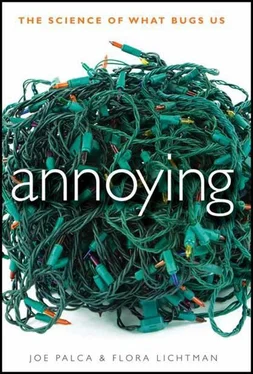So Hogan looked at personality disorders that characterized people who were arrogant, abrasive, and neurotic and “did some recreational psychometrics and boom—up pops this test, and it just works like crazy in predicting performance,” he says. “We don’t like to talk about personality disorders because lawyers will come after us.” To be a good leader, however, you have to get along.
There are approximately 165 questions in the Hogan Leadership Challenge test. The test taker is asked to “agree” or “disagree” with questions like, “I could do a better job running the country than the people doing it now,” “I am popular at parties,” “I care what people think of me,” and “I like to wear costumes.”
Hogan has come up with eleven different scales that reflect someone’s management strengths or, more important, his or her weaknesses: excitable, cautious, skeptical, reserved, bold, mischievous, colorful, imaginative, diligent, and dutiful. To set up the scoring, he asked managers to rate one another on each of these scales. He did this for thousands of people, compiling information that he stores in a database back at company headquarters.
Then he administered his test to these same managers and correlated the answers that the managers gave on the test with what people said about them. How a person answered a specific question is not important. The pattern of the answers provides the clues to what kind of person he or she is. So, for example, people who agree with the statements “I am popular at parties” and “I like to wear costumes” but disagree with the statements “I could do a better job running the country than the people doing it now” and “I care what people think of me” might be more likely to be judged as high on the colorful scale and low on the diligent scale. The key point is that Hogan did not start off with any predictions about how “a colorful” person would answer the questions. He simply measured the answers and correlated them with the ratings given by others.
Just as with chili peppers, intensity seems to be the issue here. Colorful and imaginative could mean that you’d be good at running a design department, or it might indicate that you’re building a bomb shelter to wait out a potential alien invasion. Dutiful and diligent could mean that you inspire your coworkers with your work ethic, or you might be an officious pencil pusher with a penchant for correcting grammar and punctuation.
If you realize that you’re trending too far on the intensity scale, is there anything you can do about it? “There are two general answers to that,” says Hogan. “First is that you can’t get better at it unless you know what you’re doing. So, some feedback is absolutely essential.” The second answer is that some people can modify their behavior to be more effective managers and concomitantly less irritating. Others can’t.
Hogan draws an analogy with sports. “Good athletes are coachable,” he says. “There are lots of really talented guys who are not coachable, and they don’t make out.” Take the case of tennis player Andy Roddick. “Roddick turned out to be coachable,” says Hogan. He signed on a new coach named Larry Stefanki. Stefanki found flaws in Roddick’s form and told him how to fix them. “He became the hottest guy on the [pro tennis] tour, but it’s only because he grew up enough that he’s willing to listen to some feedback,” says Hogan. “There’s this whole positive psychology movement in America right now where the notion is to ignore your deficits and focus on your positives. That’s just suicide. There’s no news in good news. You can only improve your game by getting feedback on what you’re doing wrong, and being irritating is one thing people do wrong.”
Is it possible to come up with a shorthand test, one that simply measures how annoying someone is? Hogan says yes, and here are the items he’d use.
The Annoying Inventory
Irritable
• Other people often annoy me.
• I find there are few people I can really trust.
• I don’t mind criticizing people when they deserve it.
• People often disappoint me.
• My moods can change quickly.
• These days people seem to have forgotten what hard work actually is.
• I must admit, I am sometimes hard to please.
Arrogant
• I insist on receiving the respect I am due.
• In time, people will appreciate my talents.
• I am better at what I do than almost anyone.
• I enjoy being the center of attention.
• Other people can often sense my power.
• Other people find me attractive.
• When I want to, I know how to turn on the charm.
Picky
• If you want something done right, you need to do it yourself.
• When I am irritated, I let people know.
• I have very high standards for work performance.
• I don’t really care what other people think of me.
• When people work for me, I supervise them closely.
• It is important to pay attention to the details at work.
Why these statements? Hogan says that he pulled them out of his hat (actually, he used a more colorful expression), but that’s only partly true. As someone who has been developing personality surveys for decades, Hogan now has an almost innate sense of what kinds of questions will pinpoint the various types of personalities. Although it may seem a little hit-or-miss, this is how most new survey instruments are developed.
Hogan’s initial thought was to have people respond to each statement with either “agree” or “disagree,” but Paul Connolly had a different idea. Connolly is the president of Performance Programs, a company that uses Hogan surveys in its work with corporate human resource departments. Connolly says that the test would be more informative if there were a 5-point scale: 5 means you strongly agree with the statement, 1 means you strongly disagree.
From June 16 to June 30, 2010, Hogan slipped these statements into his development survey, and as a result, 2,399 people were unwitting test subjects who assessed the usefulness of what we’ll call the Hogan Annoying Inventory (HAI). The initial data show several important things. First, there was a good spread of responses on each statement. If everybody had responded “strongly agree” to the statement “It is important to pay attention to details at work,” it wouldn’t be a very good statement for separating annoying from not-annoying people. The other thing the first data show is that the responses correlate with other qualities that the Hogan survey measures. According to this initial sample, an annoying person is pretty neurotic, pretty impulsive, and quite outgoing and talkative. In other words, a poorly adjusted extrovert. Yeah, that sounds about right.
It’s hard to know whether the HAI really measures someone’s annoyingness. Validating any new inventory is tricky, says Georgine Pion, a psychologist at Vanderbilt University. One way is to have a panel of experts rate people for how annoying they are and then give them the HAI and see how well the results compare with the expert ratings. There are problems with this approach, however. You have to get a group of people who are willing to be judged for how annoying they are. Or you can lie to people and tell them you are actually measuring something else and hope to heck they never find out the truth. Then there’s the problem of choosing the expert. There are no “experts” to choose from, in part because annoyingness is so subjective, and in part because it’s a young scientific field.
Pion says that another approach is to ask people to evaluate the statements in the survey. For example, how annoying would someone be if she possessed the trait “My moods can change quickly”? That was easier to start with, so on July 26, 2010, 265 people were e-mailed a survey that included a list of traits based on the HAI and were asked how annoying people with those traits would be on a scale from not annoying at all to extremely annoying. A total of 134 people returned the survey. The trait that people found most annoying on average was “People who think they are better at what they do than almost anyone.” Surprisingly, the least annoying trait was judged to be “People who have very high standards for work performance.”
Читать дальше












